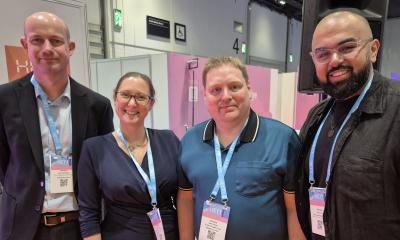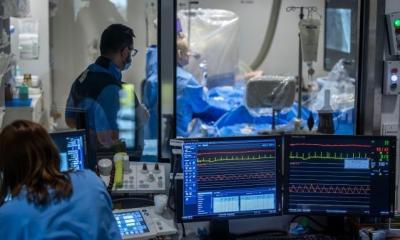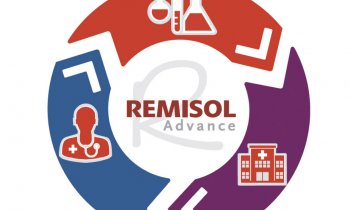Social Media
The Hospital Twitter
Healthcare IT expert Dr Dieter Kramps, who focuses on safe IT, cloud, and mobile solutions in the sector, discusses social media in hospitals with Michael Reiter.

If only hospitals were aware of the information they have about their patients. Nowadays, all clinical, nursing, and administrative information is predominantly available online, yet distributed across information sources (e.g. HIS, RIS/PACS, laboratory, nursing, e-mail). Nonetheless, complete, current online patient data is not only needed in a consultancy room, ward, or during rounds. On tablet computers and smart phones, a 360o view of a patient is helpful – if it is structured, compact, and readily available.
The offerings of Facebook and Twitter are now finding their way into hospitals. Physicians and nurses ‘follow’ the people and objects they work with – patients, beds, ORs, and medical resources. At a touch they obtain laboratory and X-ray results, changes in vital signs, or information on resources – without telephone calls, enquiries, or e-mails, directly from the hospital’s IT system.
Patient data has already been available online. HIS solutions turn into central information hubs integrating secondary systems (e.g. RIS/PACS and DMS) as data sources, as well as mobile devices. Changing a HIS means loss of information; integration servers can help. You can access relevant data from the clinical systems and make it available; standards such as IHE, HL7, and DICOM facilitate integration.
The use of the mechanisms we know from social media results in a more efficient ‘microinvasive’ way. ‘Streamers’ scour information systems for current data entries, condense them, and assign them to number ranges, security levels, and access rights, observing compliance rules. Results are posted into a secure information system available on a fixed or mobile basis. Staff can follow this information according to their respective roles and rights.
The expense is manageable: a central server makes condensed data available uniformly, fixed and mobile. A safe ‘app’ ensures appropriate display on each device. A customised streamer connects the server with the production system.
Now physicians, nurses, and administrators decide which information they need, when and for how long, and what and whom they want to keep on their radar. Internal e-mails are minimised, hours of handling correspondence dwindle to minutes. The information flood changes into a compact, active, condensed data stream directly to the user. A precise, compliant, secure information system facilitates communication with external nurses, rehabilitation clinics, and GP surgeries.
English/German details: http://cobago.net
German: http://www.drkramps.de
10.01.2013











